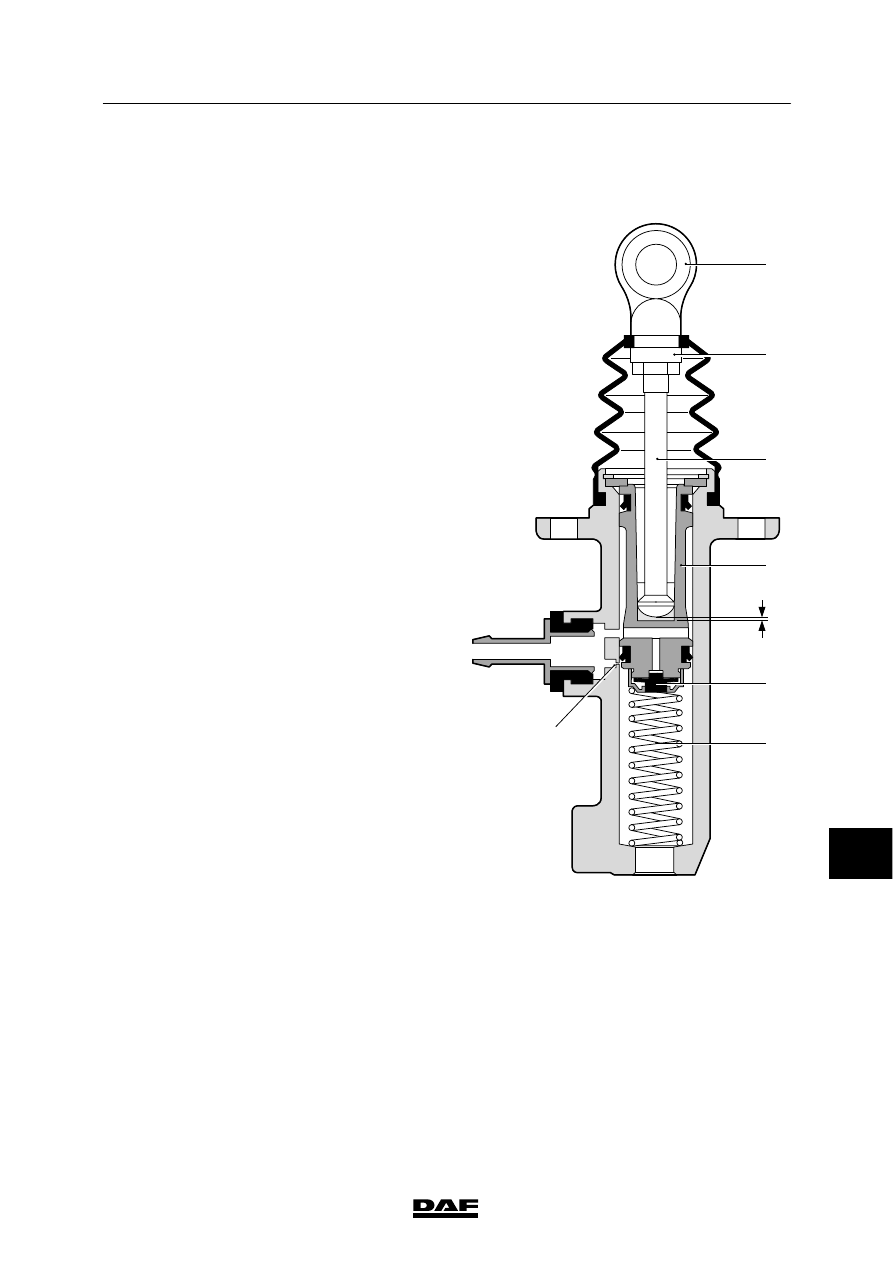DAF CF65, CF75, CF85 Series . Manual - part 351

3
CF65/75/85 series
Description of components
CLUTCH
3-1
3. DESCRIPTION OF COMPONENTS
3.1 MAIN CYLINDER
When the clutch pedal is depressed, the thrust
pin (3) will move the piston (4) down against the
spring (6).
As a result, the valve (5) closes and the
pressure starts to build up as the sleeve passes
the bore hole (7) to the reservoir.
When the clutch pedal is released, the spring (6)
ensures that the piston (4) returns to the original
position.
Any shortage of fluid underneath the piston (4)
is refilled via a bore hole in the piston (6) and
the valve (5).
It is important that after depressing the clutch
pedal, the piston (4) returns fully to the original
position, so that the 0. 6 mm compensation hole
(7) is not closed by the seal on the piston (4).
If the compensation hole is not entirely free,
residual pressure will build up, causing
excessive damage to the clutch mechanism.
The piston (4) can return fully to the original
position if there is sufficient play (E) between the
thrust pin (3) and the piston (4). See “Technical
data”.
V300411
1
E
2
3
4
5
6
7
10
ᓻ 200337